by Jung Yoon-won
The paintings of mid-career artist Kibong Rhee compel us to observe both their surface and depth with unrelenting focus. At first glance, his works seem to depict mist-covered wetlands, yet as one looks closer, another landscape emerges behind the haze. The unique sense of hazy dimensionality arises from his distinctive method: constructing the image across two layers.
Rhee overlaps canvas with a thin, opaque fabric of polyester fiber to form a single surface. The gap between these two materials is barely one centimeter — yet this minuscule interval grants an ordinary landscape a sense of immeasurable depth. It is not an empty void, but a space filled with emptiness. Just as the hollow in our lungs allows us to produce sound, the world, too, circulates and flows thanks to such empty spaces.
Thus, the immersive feeling that Rhee’s paintings are not mere surfaces, but portals into another realm where one could almost step inside, is no illusion. It is the aesthetics of the phantom — a vision created by an artist who believes that what is unseen holds the truest reality.
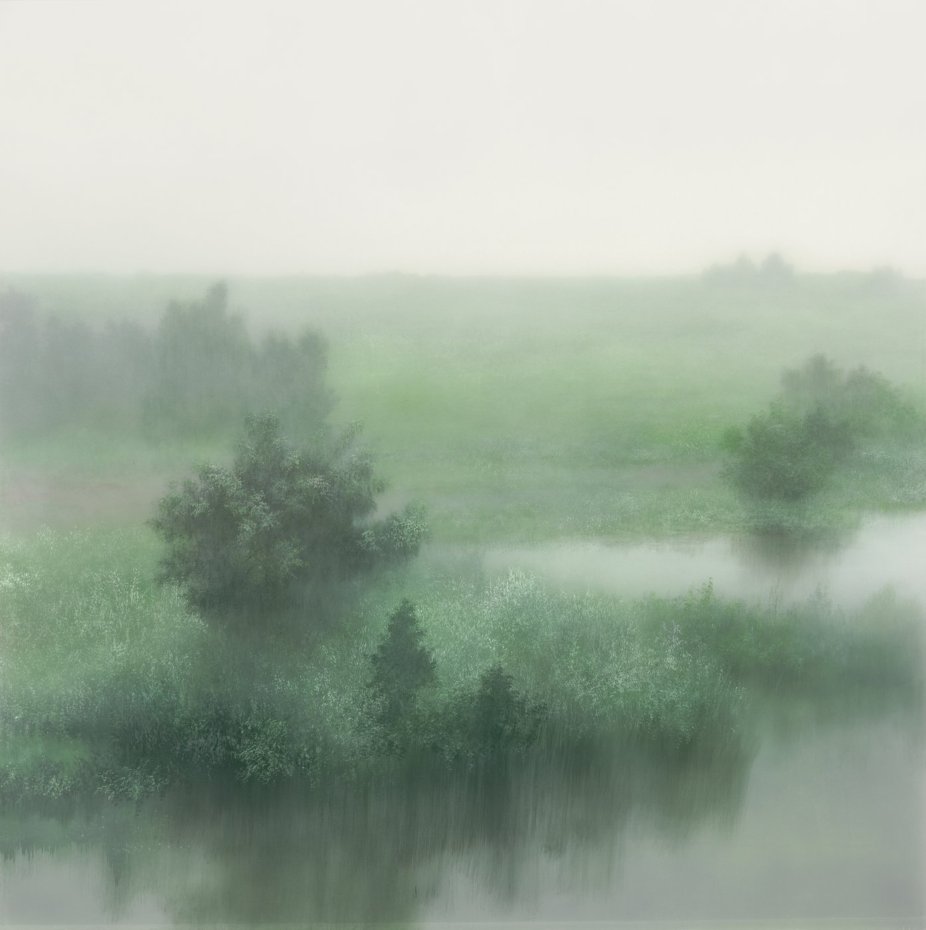
Kibong Rhee (b. 1957), Where You Stand Green-1, 2022, Acrylic and Polyester Fiber on Canvas, 186×186 cm, Courtesy of the Artist and Kukje Gallery.
Photo: Ahn Chunho. Image courtesy of Kukje Gallery.
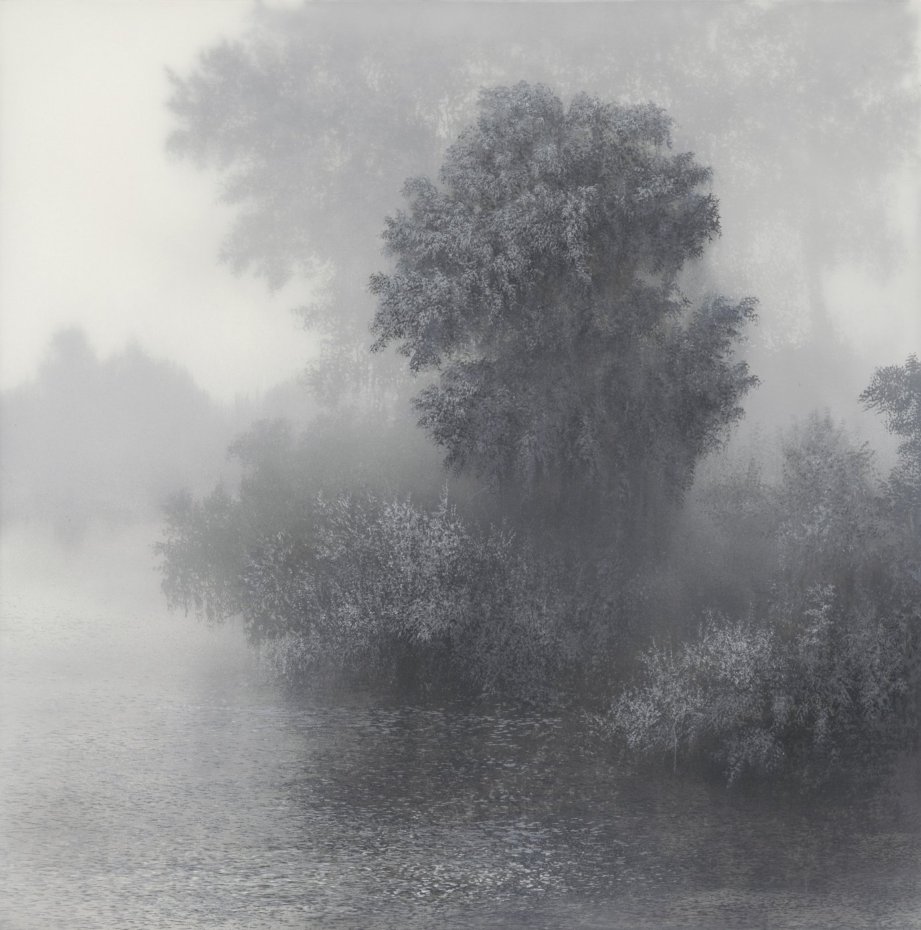 Kibong Rhee (b. 1957), Where You Stand D-1, 2022, Acrylic and Polyester Fiber on Canvas, 186×186 cm, Courtesy of the Artist and Kukje Gallery.
Kibong Rhee (b. 1957), Where You Stand D-1, 2022, Acrylic and Polyester Fiber on Canvas, 186×186 cm, Courtesy of the Artist and Kukje Gallery.
Photo: Ahn Chunho. Image courtesy of Kukje Gallery.
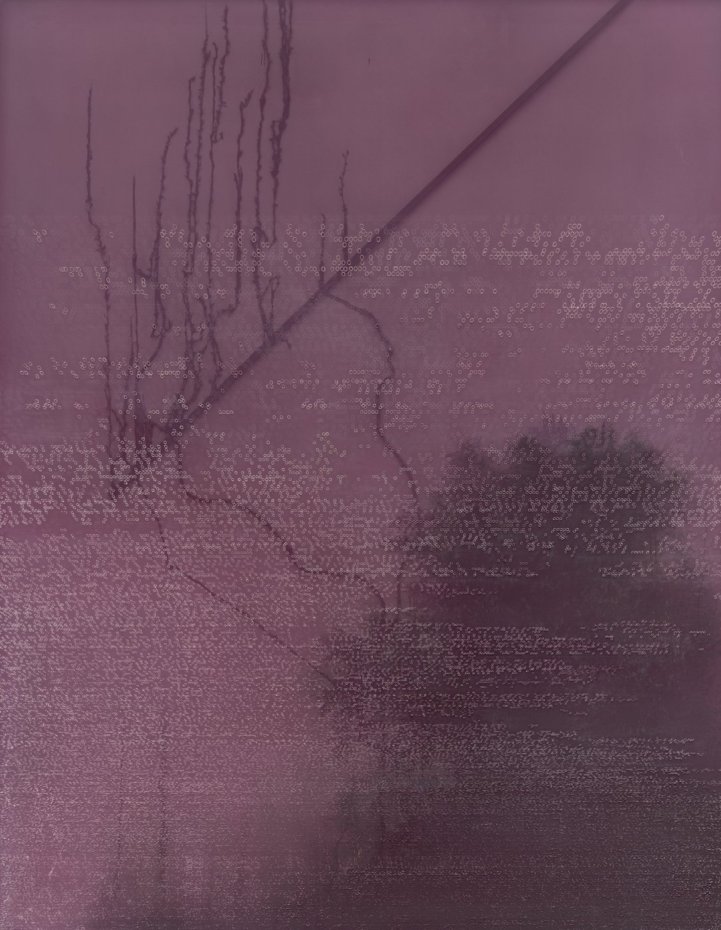
Kibong Rhee (b. 1957), Deeper than Shadow — Purple, 2021, Wood, Silicon, Thread, and Polyester Fiber on Canvas, 241×186 cm, Courtesy of the Artist and Kukje Gallery.
Photo: Ahn Chunho. Image courtesy of Kukje Gallery.
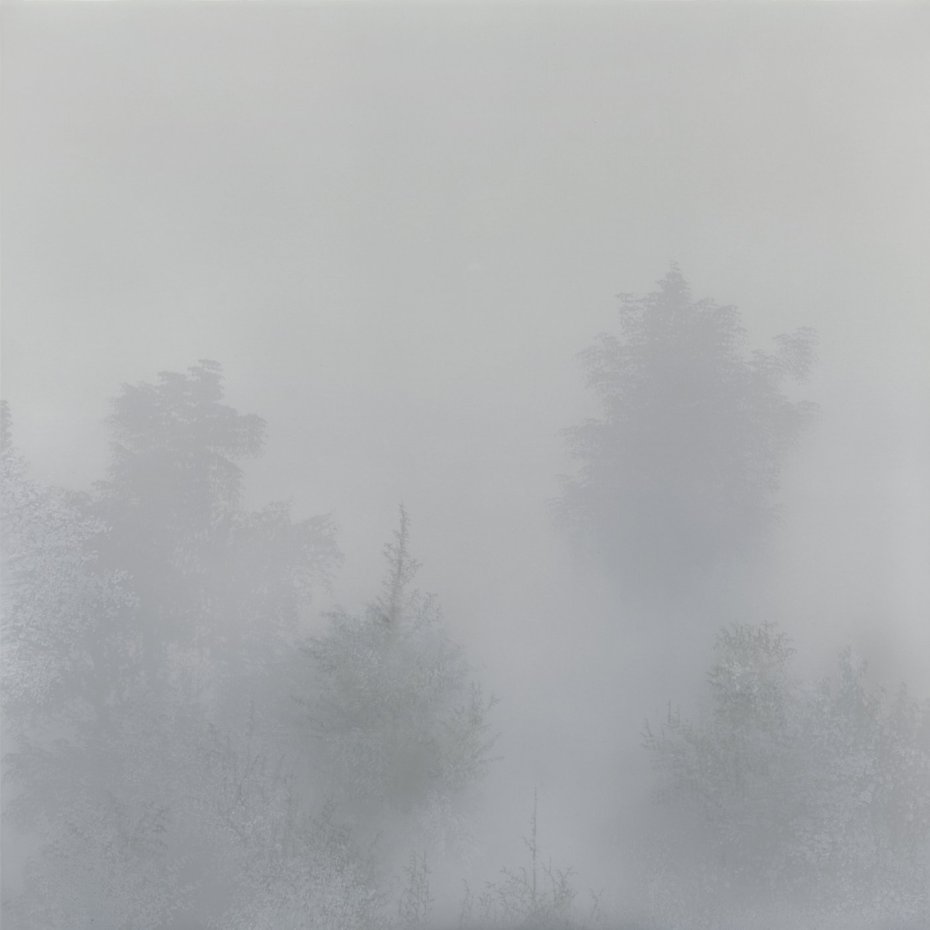
Kibong Rhee (b. 1957), Stand on Shadow No. 9-3, 2022, Acrylic and Polyester Fiber on Canvas, 110×110 cm, Courtesy of the Artist and Kukje Gallery.
Photo: Ahn Chunho. Image courtesy of Kukje Gallery.
Through December 31, Kukje Gallery’s Seoul (K1, K2) and Busan spaces present Rhee’s latest works, which continue his decades-long exploration of the structures and flows that constitute the essence of the world. The landscapes in his paintings can be described as the synthesis of opposing concepts — shadow and substance, language and silence, sensation and reason.
In particular, the thin layer of fabric plays a symbolic role within these landscapes. Rhee describes it as a “transparent membrane of the imagination,” because, as he explains, “without that membrane, we cannot see the world.” Elements such as trees, mist, and water serve as devices that reveal the presence of this veil — doorways leading into an infinite space. Beyond visual effect, this fabric operates as a paradoxical element that simultaneously conceals and discloses the mechanisms through which humans, objects, and the world interrelate.
If these dreamlike, mysterious landscapes feel at once familiar and strange, it is because they metaphorically map the terrain of the mind and the world itself. That is why the artist refers to his works not as “landscapes,” but as “paintings of the world.”
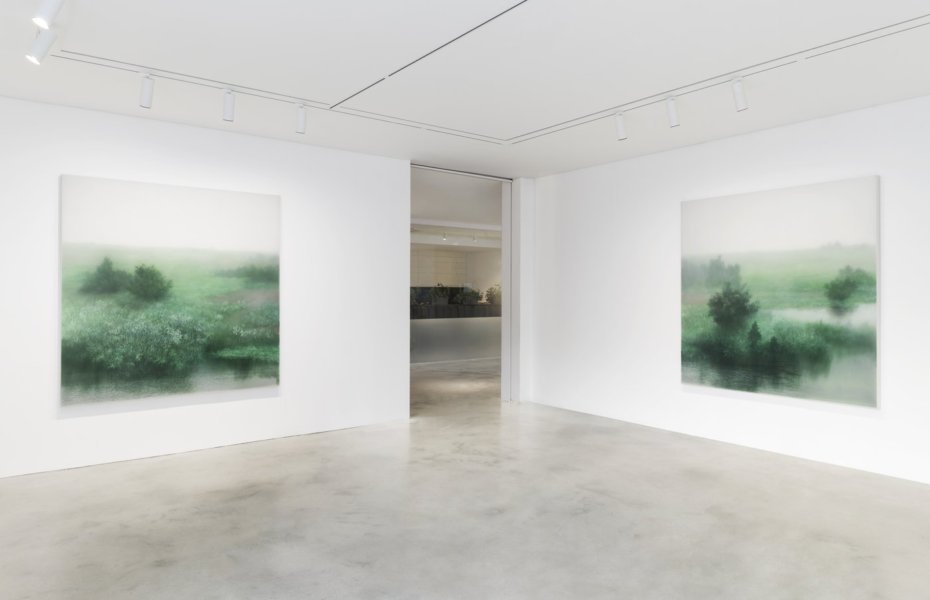
Installation views of Kibong Rhee’s solo exhibition “Where You Stand,” Kukje Gallery Seoul (K1, K2) and Busan.
Images courtesy of Kukje Gallery.
